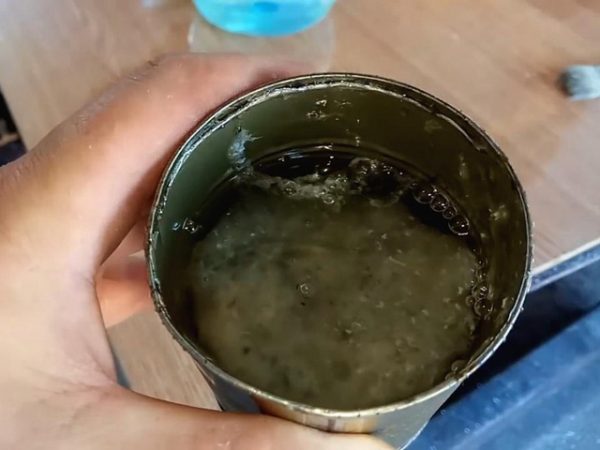When making or repairing furniture yourself, the use of varnish is often required. The same tool is used for concrete floors, walls in order to increase the moisture resistance of the coating. You can buy the product in the store, but the price is quite high, the expense is high. There is a solution: make polystyrene foam with your own hands. Its properties will be no worse than that of finished paints and varnishes, but the production costs are minimal.
Necessary materials
For the preparation of coatings, two main components will be required: polystyrene (expanded polystyrene) and a solvent. The latter may be acetone, xylene, orthoxylene, butyl acetate, and there are also gasoline-based recipes. Additionally, you should take:
- unnecessary capacity;
- a stick of wood;
- piece of gauze.
to contents ↑The easiest way to dissolve the foam in xylene, orthoxylene, in other solvents it is much more difficult to do. In addition, homemade gasoline-based varnish turns out to be jelly-like and is suitable only for application to the surface with a rather thick layer. It is better to use it not for painting products, but as glue.
Making varnish: instruction
To prepare paintwork materials, you should take 70-100 ml of xylene, pour it into a container, taking about 1/3 of its volume. To further reduce the cost of the material, you can combine xylene and acetone (gasoline) equally or then dilute the thick finished varnish with inexpensive solvents. After the procedure will be as follows:
- Take the foam, break it into small pieces. The finer the crumble, the faster the dissolution process will occur. The approximate amount of foam is 0.3 cubic meters. dm.
- Press the foam with a wooden stick so that the pieces are immersed in the liquid. The material will immediately begin to dissolve, gas bubbles will come to the surface.
- You can add more polystyrene, so that the consistency of the product resembles sour cream, liquid honey. High-quality varnish flows from the stick like a thread, does not separate into drops.
- Cover the varnish, leave for 20-60 minutes to insist. Color should remain transparent.
- Strain the container through cheesecloth. Pour clean composition into a new container that has a cork, a lid.
For varnishing apply brushes or spatulas. You can simply pour paintwork on the surface, smear it with movements in different directions. The drying time of such a tool is 5 minutes after application at room temperature. You can use the product after an hour when complete curing is achieved.
It is recommended to use the finished product for the following purposes:
- varnishing of wooden products;
- increase moisture resistance of concrete;
- covering any painted objects.
Using foam polish, you can make other paints and varnishes. For example, if you introduce small wood shavings into it, you get a reliable putty for holes, chips, cracks. You can also make conductive varnish. For this, special fine-grained components are introduced into the composition, which, after polymerization, form a film with excellent electrical conductivity. Usually they are used on metal, glass, plastic, wood.
For 100 g of finished coatings, 15 g of powdered silver and fine-grained graphite are added. Mix well until a dark thick liquid is obtained. Shake the varnish thoroughly before use so that the heavy particles do not settle down.
to contents ↑
Precautionary measures
All solvents are flammable, flammable liquids. In addition, they are toxic, emit an unpleasant odor. It is advisable to work with them not at home, but in a workshop with good air circulation, in extreme cases, on the balcony. In the manufacture and application of varnish should use a respirator, gloves. The smell disappears only after drying completely, and then the thing becomes safe.









